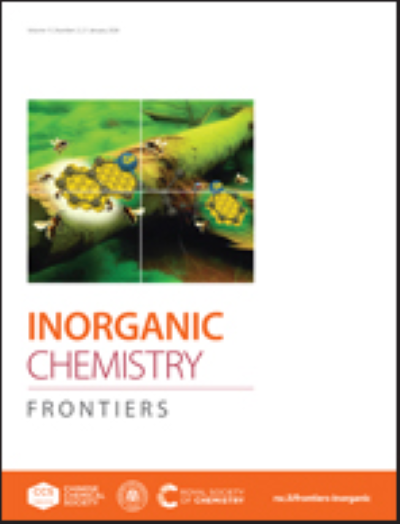具有h溢出效应的异质结构Cu-Bi纳米片在海水上的高稳定性电催化CO2还原
IF 6.4
1区 化学
Q1 CHEMISTRY, INORGANIC & NUCLEAR
引用次数: 0
摘要
在海水中直接电催化减少二氧化碳以生产有价值的产品,为减少二氧化碳排放提供了显著优势,并最大限度地减少了淡水资源或电解质的使用。然而,海水中离子的复杂性和高浓度会导致催化剂的腐蚀,给催化剂的活性和稳定性带来挑战。本研究提出了一种超薄异质结构Cu- bi纳米片(Cu/BMO NSs),通过在Bi2MoO6纳米片(BMO NSs)中嵌入铜纳米颗粒(Cu NPs)来电还原CO2,该纳米片具有活性位点丰富、化学稳定性高、h -溢出效应强、电催化过程中电子转移良好等特点,在海水中具有优异的CO2还原性能。值得注意的是,在自然海水中,电催化50 h后,HCOOH (FEHCOOH)的法拉第效率可保持在90%以上(−1.0 V)。所取得的性能优于几乎所有报道的电催化海水中二氧化碳还原的电催化剂。理论计算表明,Cu NPs的引入可以诱导Cu/BMO NSs中的h溢出效应,促进与CO2反应形成关键中间体*OCHO的水解离过程,并随后加氢生成HCOOH。这项工作将促进海水中可持续电催化技术的发展。本文章由计算机程序翻译,如有差异,请以英文原文为准。
High-Stability Electrocatalytic CO2 Reduction in Seawater Over Heterostructure Cu-Bi Nanosheets with H-Spillover Effect
Direct electrocatalytic CO2 reduction in seawater to produce valuable products offers significant advantages for CO2 mitigation and minimizes the use of freshwater resources or electrolytes. Nevertheless, the complexity and high concentration of ions in seawater can lead to the corrosion of catalysts, posing challenges to their activity and stability. This study presents a kind of ultrathin heterostructure Cu-Bi nanosheets (Cu/BMO NSs) for CO2 electroreduction by embedding copper nanoparticles (Cu NPs) in Bi2MoO6 nanosheets (BMO NSs), which features abundant active sites, high chemical stability, strong H-spillover effect and favorable electron transfer during the electrocatalytic process, leading to superior CO2 reduction performance in seawater. Remarkably, in natural seawater, the faradaic efficiency for HCOOH (FEHCOOH) can remain above 90% (−1.0 V) over 50 h electrocatalysis. The achieved performance is superior to almost all of the electrocatalysts reported for electrocatalytic CO2 reduction in seawater. Theoretical calculations reveal that the introduction of Cu NPs could induce H-spillover effect in Cu/BMO NSs to facilitate the water dissociation process in reacting with CO2 to form the key intermediate *OCHO and subsequently hydrogenate to produce HCOOH. This work would promote the development of sustainable electrocatalytic technology in seawater.
求助全文
通过发布文献求助,成功后即可免费获取论文全文。
去求助
来源期刊

Inorganic Chemistry Frontiers
CHEMISTRY, INORGANIC & NUCLEAR-
CiteScore
10.40
自引率
7.10%
发文量
587
审稿时长
1.2 months
期刊介绍:
The international, high quality journal for interdisciplinary research between inorganic chemistry and related subjects
 求助内容:
求助内容: 应助结果提醒方式:
应助结果提醒方式:


